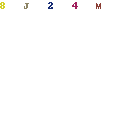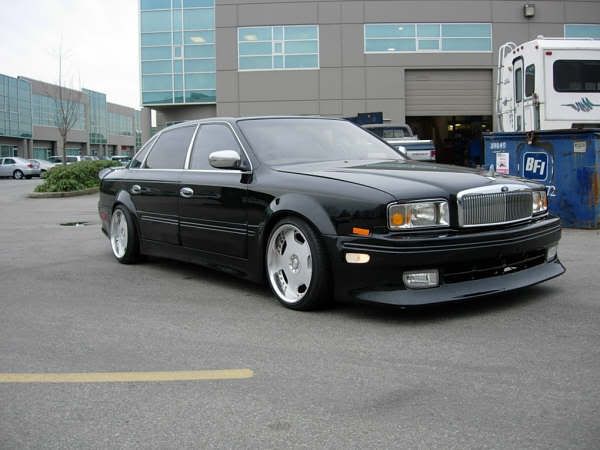2010 Jaguar XJ - Car News
A big leap forward.
BY MARK GILLIES
July 2009
There is nothing much wrong with the way the current Jaguar XJ drives, but it is down on passenger space compared with its peers, and it appears to have been stamped from a mold the automaker has depended on for the past 25 years. Talk to Jaguar dealers, and they will say that people who drove the car loved it: The problem was getting people to look at it in the first place.

The new XJ, which goes on sale early next year in the U.S. as a 2010 model, is as bold as the current car is staid. This is a dramatic, coupelike four-door sedan, with a notably bluff grille, a short front overhang, and a long tail. The only jarring note, to our eyes, is a black plastic section on the C-pillars that looks like an afterthought. We also think the long-wheelbase version, which stretches the rear doors an additional five inches, is the better-looking model. Overall, the new car is 1.3 inches longer than the current XJ, at 201.7 inches for the short-wheelbase car.

Like the current sedan, the new XJ is underpinned by an aluminum body shell that’s riveted and bonded together. Jag also uses magnesium, most notably for the front and under-dash crossbeams. Andy Dobson, chief program engineer, says the basic principles of the architecture are carried over, but that most of the pieces and the suspension mounts have been changed. The rear axle is shared with the XFR model, as is its electronically controlled differential. Dobson says the car is slightly lighter than an XF, which weighs 4400 pounds with the supercharged engine.

Three powerplants will be offered in the U.S.: a 385-hp, naturally aspirated 5.0-liter V-8; and 470-hp and 510-hp supercharged versions of the same engine. These correspond to three models—base, Supercharged, and Super Sport; each is available in long- and short-wheelbase forms. A six-speed ZF automatic transmission has paddle shifters. The suspension is similar to the current car’s, with unequal-length control arms in front and a multilink arrangement at the rear, but electronically variable shocks are now standard, and air springs are only at the back instead of at all corners.

The interior is plush and very beautiful, with a stockyard’s worth of hand-stitched leather; piano-black, chrome, and wood trim are also on display. The traditional gauges have been replaced by a thin-film transistor screen that is reconfigurable. The central touch screen is now eight inches wide (instead of seven) and much easier to operate than the one in the XF and XK. There’s also an optional 20-speaker, 1200-watt Bowers & Wilkins stereo.
Although it will be launched into a depressed market, the XJ is vital for Jaguar as it seeks to position itself as a genuine alternative to the German luxury-car makers but at a much lower price, likely starting below $70,000. If the XJ drives as well as it looks, it could well succeed.




A big leap forward.
BY MARK GILLIES
July 2009
There is nothing much wrong with the way the current Jaguar XJ drives, but it is down on passenger space compared with its peers, and it appears to have been stamped from a mold the automaker has depended on for the past 25 years. Talk to Jaguar dealers, and they will say that people who drove the car loved it: The problem was getting people to look at it in the first place.

The new XJ, which goes on sale early next year in the U.S. as a 2010 model, is as bold as the current car is staid. This is a dramatic, coupelike four-door sedan, with a notably bluff grille, a short front overhang, and a long tail. The only jarring note, to our eyes, is a black plastic section on the C-pillars that looks like an afterthought. We also think the long-wheelbase version, which stretches the rear doors an additional five inches, is the better-looking model. Overall, the new car is 1.3 inches longer than the current XJ, at 201.7 inches for the short-wheelbase car.

Like the current sedan, the new XJ is underpinned by an aluminum body shell that’s riveted and bonded together. Jag also uses magnesium, most notably for the front and under-dash crossbeams. Andy Dobson, chief program engineer, says the basic principles of the architecture are carried over, but that most of the pieces and the suspension mounts have been changed. The rear axle is shared with the XFR model, as is its electronically controlled differential. Dobson says the car is slightly lighter than an XF, which weighs 4400 pounds with the supercharged engine.

Three powerplants will be offered in the U.S.: a 385-hp, naturally aspirated 5.0-liter V-8; and 470-hp and 510-hp supercharged versions of the same engine. These correspond to three models—base, Supercharged, and Super Sport; each is available in long- and short-wheelbase forms. A six-speed ZF automatic transmission has paddle shifters. The suspension is similar to the current car’s, with unequal-length control arms in front and a multilink arrangement at the rear, but electronically variable shocks are now standard, and air springs are only at the back instead of at all corners.

The interior is plush and very beautiful, with a stockyard’s worth of hand-stitched leather; piano-black, chrome, and wood trim are also on display. The traditional gauges have been replaced by a thin-film transistor screen that is reconfigurable. The central touch screen is now eight inches wide (instead of seven) and much easier to operate than the one in the XF and XK. There’s also an optional 20-speaker, 1200-watt Bowers & Wilkins stereo.
Although it will be launched into a depressed market, the XJ is vital for Jaguar as it seeks to position itself as a genuine alternative to the German luxury-car makers but at a much lower price, likely starting below $70,000. If the XJ drives as well as it looks, it could well succeed.













